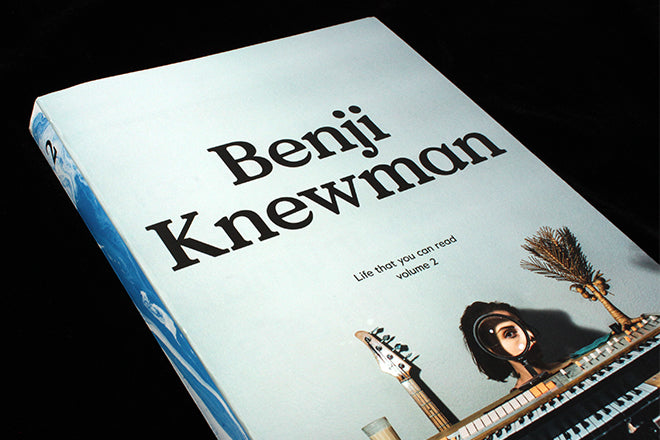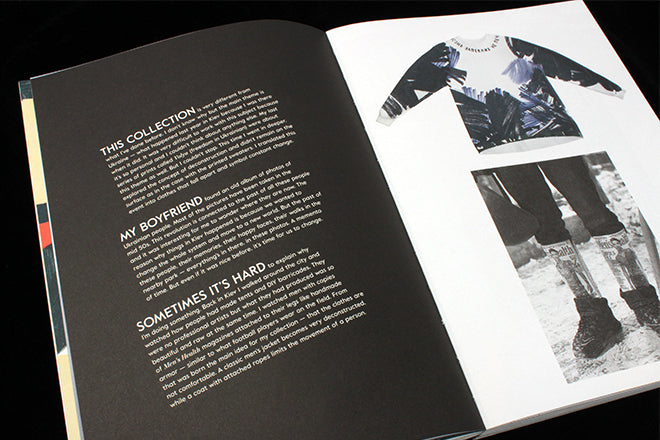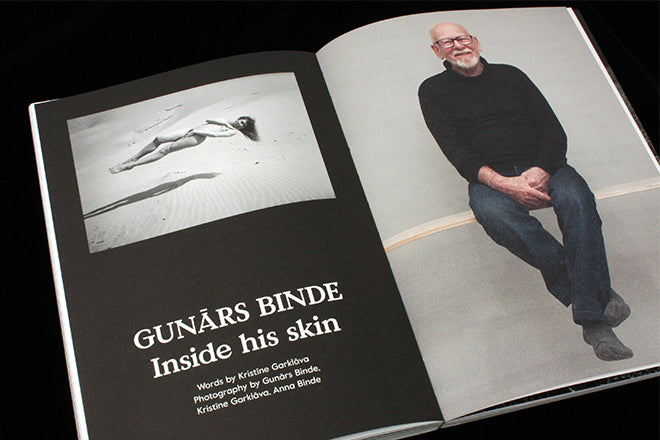
Benji Knewman #2
At magCulture’s Pick Me Up event last week, Weapons of Reason’s Danny Miller made the statement that a first issue of a magazine is essentially a ‘proof of concept’, and that the second issue is a chance to fix the problems and hone the vision.
The Little White Lies founder belongs to a school of magazine makers producing publications that radiate a sense of honesty and loveliness; they have a zest for storytelling as well as an undying love for Wes Anderson’s prop department. Benji Knewman belongs to this school. It’s a Latvian magazine based around an imaginary character who is listed as editor-at-large in the masthead, and whose editorial letter is written ‘early Saturday morning, after returning from a birthday party’. He really is an unwritten Wes Anderson character made not of flesh but of glossy paper and ink – ever-smiling, dreamy and adventurous. The editorial team are so devoted to the myth of Benji that his story extends from the pages of the ‘book-a-zine' and it is difficult to tell whether the 38-year-old is a real person or not: when I email the mag, editor-in-chief Agnese Kleina replies ‘It's Agnese on behalf of Benji :)’.
 The second issue follows through with the vision of the first: the magazine is a ‘Life that you can read’ where Benji travels around Europe meeting new people, helping a woman move house, interviewing artists and image makers, listening to confessional stories, and taking photographs of things he spots along his way. People and their stories is the focus of the magazine. Like Danny’s observation about the growth of a magazine, the second issue of Benji Knewman hones in on the editorial vision: this time round we get even more of a sense of Benji’s (and therefore the mag’s) personality. The cover image suggests that he’s maybe an amateur musician with a love of eccentric junk shop finds and milky coffee.
The second issue follows through with the vision of the first: the magazine is a ‘Life that you can read’ where Benji travels around Europe meeting new people, helping a woman move house, interviewing artists and image makers, listening to confessional stories, and taking photographs of things he spots along his way. People and their stories is the focus of the magazine. Like Danny’s observation about the growth of a magazine, the second issue of Benji Knewman hones in on the editorial vision: this time round we get even more of a sense of Benji’s (and therefore the mag’s) personality. The cover image suggests that he’s maybe an amateur musician with a love of eccentric junk shop finds and milky coffee.
 The fold out cover bears a thoughtful quote from astronomer Steve Fossey (above) - adding a layer of depth both physically and literally – and also reveals an open bound spine. The binding (which allows the pages to fold open with ease) and the sensation of revelation means that the magazine’s physical shape is approachable, open and friendly, much like Benji himself. The first issue explored the concept of a magazine-as-person; the second extends the concept to every aspect of the design.
The fold out cover bears a thoughtful quote from astronomer Steve Fossey (above) - adding a layer of depth both physically and literally – and also reveals an open bound spine. The binding (which allows the pages to fold open with ease) and the sensation of revelation means that the magazine’s physical shape is approachable, open and friendly, much like Benji himself. The first issue explored the concept of a magazine-as-person; the second extends the concept to every aspect of the design.


Each chapter of the magazine has a storybook ring to it, beginning with the epic ‘…in which we . . .’ (above) so that it feels as if you and Benji are travelling together. In this way, the magazine thinks of itself as a kind of friend. The blue marble effect that runs throughout issue two is atmospheric and dreamy, the typefaces are friendly and well intentioned. On the journey through the mag, the people we/Benji meet radiate this same tone: a piece by Girts Gauja excitedly riffs on a passage from a Thomas Mann novel (also above), and Benji talks philosophy with astronomer Steve whilst baking bread (below). Reading through, I start to think of Benji as a kind of backpacker traversing through Europe searching for meaningful encounters with inspiring people. As well as Wes Anderson, there is a bit of Richard Linklater thrown into the mix.

 Other forms of storytelling beside the conversational also make an appearance. A comic called ‘Healthy Relationships’ by Robert Rurans (above) makes for a pleasing encounter. Elsewhere, snippets from a sketchbook belonging to Ukrainian clothing designer Masha Reva are set beside paragraphs of text that muse on the relationship between contemporary politics and fashion (below). The tilted paragraphs are a gentle nod to the personality of the interviewee – Benji Knewman occasionally, and very subtly, adopts the style of the speaker.
Other forms of storytelling beside the conversational also make an appearance. A comic called ‘Healthy Relationships’ by Robert Rurans (above) makes for a pleasing encounter. Elsewhere, snippets from a sketchbook belonging to Ukrainian clothing designer Masha Reva are set beside paragraphs of text that muse on the relationship between contemporary politics and fashion (below). The tilted paragraphs are a gentle nod to the personality of the interviewee – Benji Knewman occasionally, and very subtly, adopts the style of the speaker.

 At the center of the mag, a still life by studio Cocolia explodes with colour and polka dots (above). This story creates a significant change in the magazine’s pace; the clownish colours and surreal humour offset the black, blue and brownish tones elsewhere.
At the center of the mag, a still life by studio Cocolia explodes with colour and polka dots (above). This story creates a significant change in the magazine’s pace; the clownish colours and surreal humour offset the black, blue and brownish tones elsewhere.
 A small piece written by a photographer’s muse and wife (above), a conversation with a Russian theatre director, and an interview with Latvia’s most famous photographer Gunars Binde (below) are a few more examples of the characters met along the way.
A small piece written by a photographer’s muse and wife (above), a conversation with a Russian theatre director, and an interview with Latvia’s most famous photographer Gunars Binde (below) are a few more examples of the characters met along the way.
 I’ve often thought about how a magazine at its best can be like a person – someone you know and get and who is close to you. Editors of Benji Knewman have recognised how the best magazines cultivate a sense of personality, and this is their approach throughout. Usually it takes a while for a magazine to grow, evolve and then feel like a person you actually know – Benji have skipped to the end result. Issue two shows the editorial team growing into character and becoming Benji – we’ll get to know him even more as they do too.
I’ve often thought about how a magazine at its best can be like a person – someone you know and get and who is close to you. Editors of Benji Knewman have recognised how the best magazines cultivate a sense of personality, and this is their approach throughout. Usually it takes a while for a magazine to grow, evolve and then feel like a person you actually know – Benji have skipped to the end result. Issue two shows the editorial team growing into character and becoming Benji – we’ll get to know him even more as they do too.


